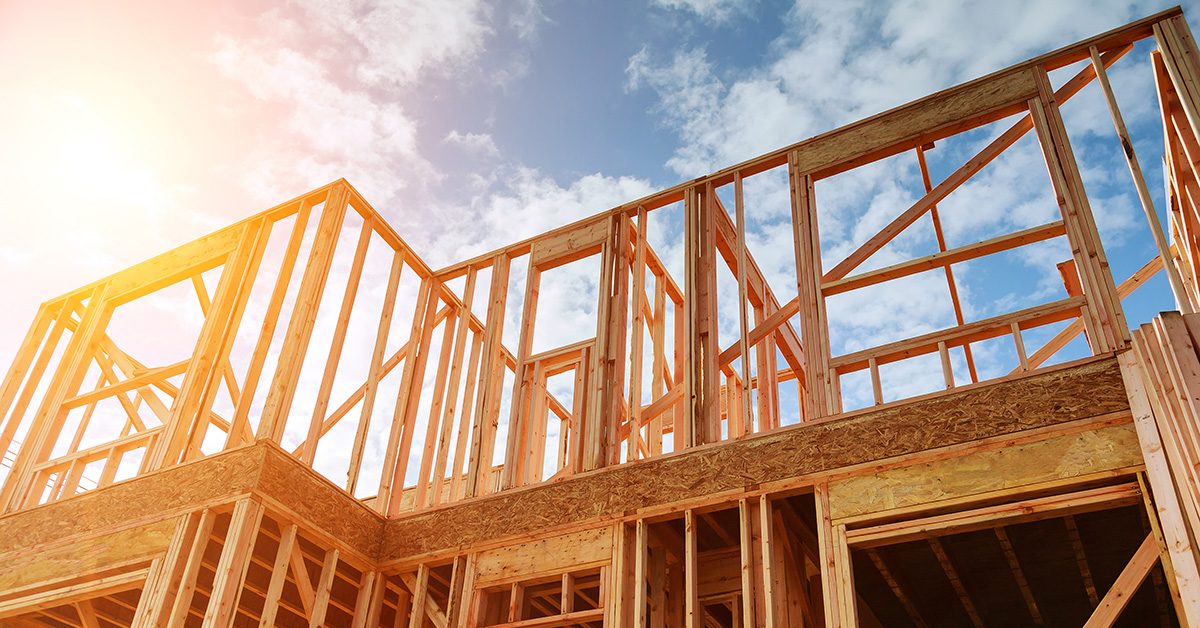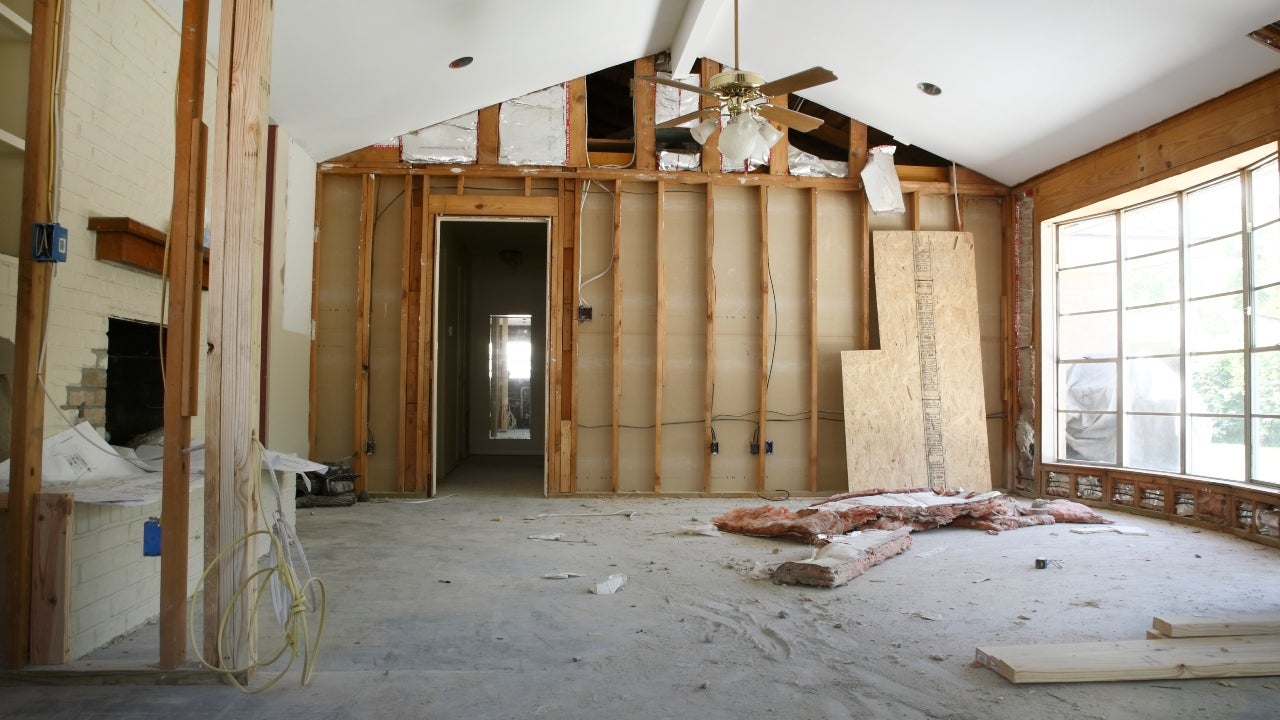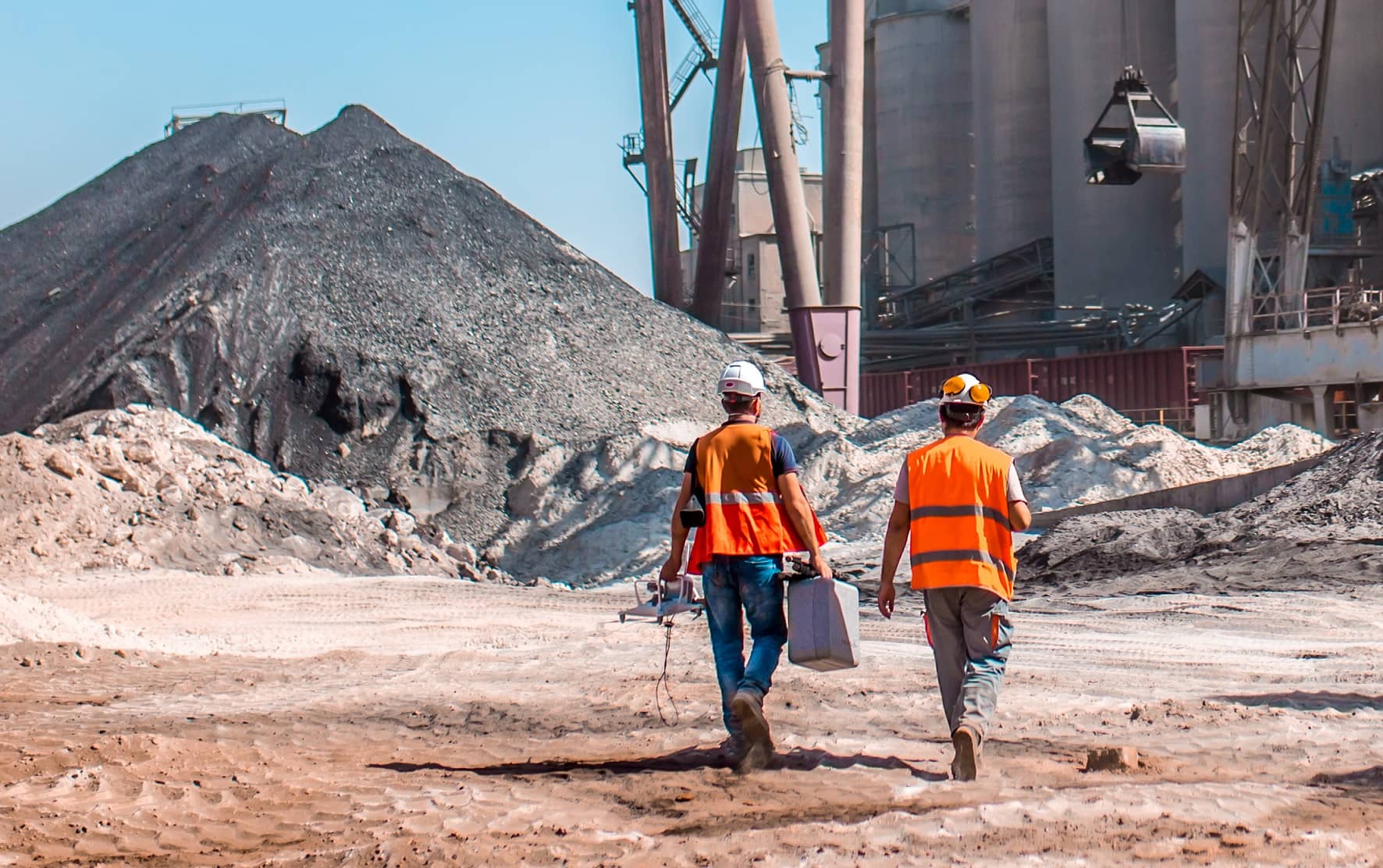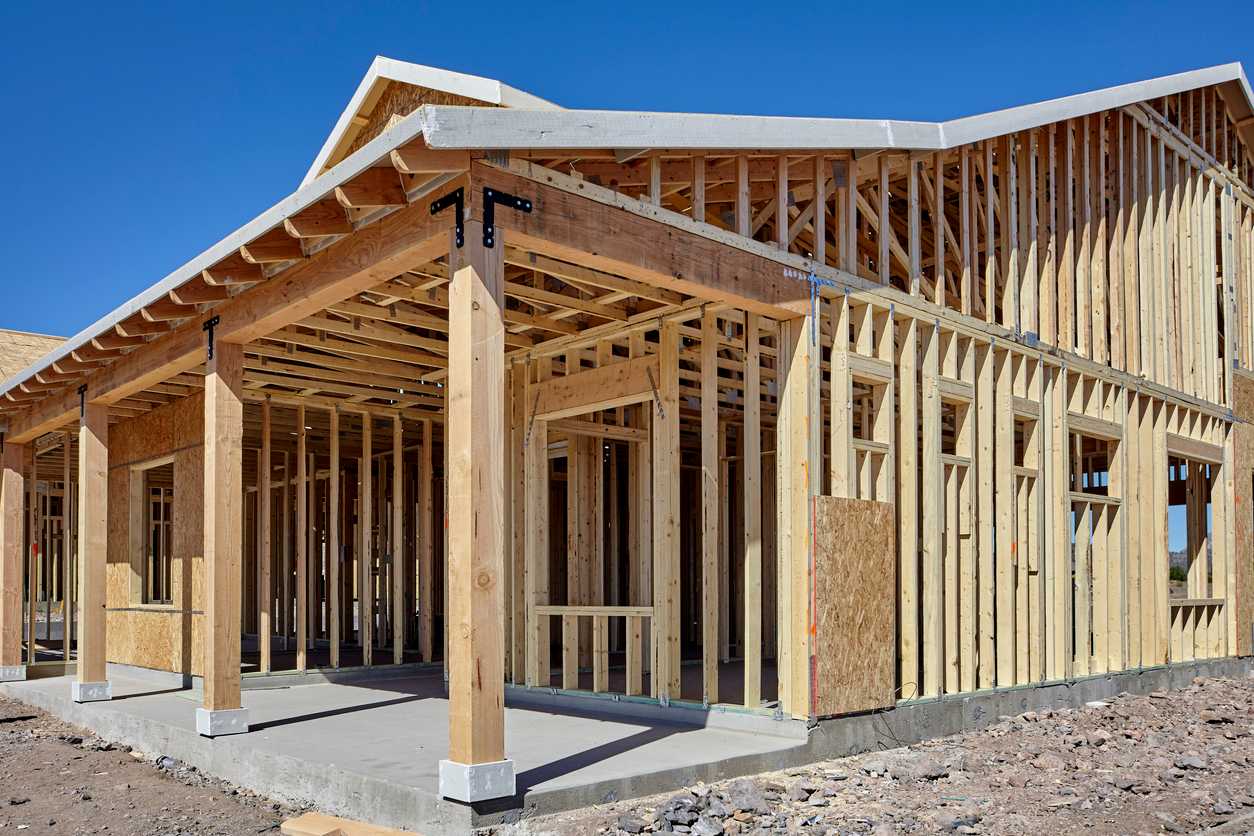Home>diy>Building & Construction>How To Get A Loan For Land And Construction


Building & Construction
How To Get A Loan For Land And Construction
Modified: August 28, 2024
Discover how to secure a loan for land and construction projects with our comprehensive guide. Get expert advice on financing your building and construction endeavors.
(Many of the links in this article redirect to a specific reviewed product. Your purchase of these products through affiliate links helps to generate commission for Storables.com, at no extra cost. Learn more)
Introduction
When it comes to building your dream home or starting a construction project, financing can be a major hurdle. The cost of land and construction materials can add up quickly, making it challenging to fund the entire project out of pocket. This is where getting a loan for land and construction can come to your rescue.
In this comprehensive guide, we will walk you through the process of obtaining a loan for land and construction, covering everything from finding a lender to managing the loan. Whether you’re a first-time homebuilder or looking to expand your real estate portfolio, understanding the loan process is crucial for a successful construction project.
Obtaining a loan for land and construction involves several steps, including finding the right lender and providing the necessary documentation. We will discuss each step in detail, giving you the knowledge and confidence to navigate the process effortlessly.
Furthermore, we will explore the different loan options available for land and construction projects, taking into account factors such as interest rates and repayment terms. By choosing the right loan option, you can ensure that your project stays within budget and aligns with your financial goals.
Calculating the loan amount and repayment is another vital aspect that we will delve into. Knowing how much you can borrow and understanding the repayment schedule can help you make informed decisions and avoid any financial pitfalls down the road.
Applying for the loan is the next step in the process, and we will guide you through the application process, including tips on how to improve your chances of approval. We will also discuss the approval process and what to expect during this stage.
Once the loan is approved, the funds will be disbursed to facilitate the land purchase and construction. We will outline the disbursement process and provide insights on how to effectively manage the loan throughout the construction phase.
By the end of this guide, you will have a clear understanding of how to secure a loan for land and construction, empowering you to bring your vision to life and create the home or project you’ve always dreamt of. So, let’s dive into this exciting journey of financing your land and construction endeavors!
Key Takeaways:
- Securing a loan for land and construction involves understanding the loan process, finding the right lender, and preparing thorough documentation to increase approval chances and ensure a smooth financing journey.
- Effective loan management is crucial for successful land and construction projects, involving budgeting, timely payments, and proactive communication with lenders to navigate the complexities of the loan process.
Read more: How To Get A Construction Loan For A Home
Understanding the Loan Process
Before diving into the loan process, it’s important to have a basic understanding of how it works. A loan for land and construction typically consists of two parts: the land loan and the construction loan. Let’s break it down step by step.
1. Land Loan: The land loan is used to finance the purchase of the land on which you plan to build your home or project. Lenders may offer different terms for land loans, including the loan amount, interest rates, and repayment periods. It’s essential to research and compare multiple lenders to find the best terms that suit your needs.
2. Construction Loan: Once you have acquired the land, you will need a construction loan to cover the costs of building your dream home or project. The duration of the construction loan is typically shorter than a traditional mortgage, ranging from 6 months to 2 years. During this period, you will make interest-only payments.
3. Construction to Permanent Loan: Another option to consider is a construction-to-permanent loan. This type of loan combines the land loan and construction loan into one overall loan that converts to a traditional mortgage once the construction is completed. This can simplify the process by eliminating the need for two separate loans.
When applying for a loan, lenders will assess your creditworthiness and financial stability. They will review your credit score, income, employment history, and other factors to determine your eligibility for the loan. It’s crucial to have a good credit score and a stable financial situation to increase your chances of approval and secure favorable loan terms.
During the loan application process, you may be required to provide documentation such as bank statements, tax returns, proof of income, and a detailed construction plan. The lender will evaluate the value of the land, construction costs, and your ability to repay the loan. It’s important to have all the necessary documentation prepared and organized to streamline the application process.
Once your loan application is approved, the lender will disburse the funds either directly to you or to a designated escrow account. The disbursement process may involve several stages, typically tied to specific construction milestones. The funds will be released as needed throughout the construction process, ensuring that you have the necessary funds to cover expenses.
Understanding the loan process is crucial to successfully navigate the financing of your land and construction project. By familiarizing yourself with the different types of loans available, preparing the necessary documentation, and having a clear understanding of the disbursement process, you can ensure a smooth and efficient funding journey for your dream home or project.
Finding a Lender
Finding the right lender is a crucial step in obtaining a loan for land and construction. With numerous financial institutions and lenders offering various loan products, it’s essential to do your research and find the one that best suits your needs.
1. Local Banks and Credit Unions: Start by exploring banks and credit unions in your local area. These institutions often have specialized loan programs for land and construction projects. Visit their websites or make inquiries in-person to gather information about their loan terms, interest rates, and eligibility criteria.
2. Online Lenders: In recent years, online lending platforms have gained popularity by offering convenience and competitive loan terms. Consider researching reputable online lenders that specialize in construction loans. Be sure to read reviews and compare interest rates and fees to make an informed decision.
3. Builder Recommendations: If you are working with a reputable builder, they may have relationships with preferred lenders. Builders often have experience working with certain lenders and can provide insights on their financing options. Don’t hesitate to reach out to your builder for recommendations and guidance.
4. Mortgage Brokers: Mortgage brokers act as intermediaries between borrowers and lenders. They have access to a wide range of loan products and can help you identify lenders who offer land and construction loans. Mortgage brokers can save you time and effort by doing the legwork of finding suitable lenders based on your specific requirements.
When evaluating lenders, there are several factors to consider:
1. Loan Terms: Pay attention to the interest rates, repayment terms, and fees associated with the loan. Be sure to compare these factors across multiple lenders to find the most favorable terms for your project.
2. Experience: Look for lenders with experience in financing land and construction projects. They will have a better understanding of the unique challenges and requirements associated with these types of loans.
3. Customer Service: The lender you choose should have excellent customer service. They should be responsive to your inquiries and provide clear and transparent communication throughout the loan process. This can greatly ease any concerns or uncertainties you may have.
4. Reputation: Research the reputation of the lender by reading reviews and ratings from past clients. This will give you insight into their track record and level of customer satisfaction.
Ultimately, finding a lender who offers competitive loan terms, has experience in land and construction financing, and provides exceptional customer service is key. Take your time to evaluate your options, gather multiple quotes, and choose a lender who meets your requirements and aligns with your project goals.
Preparing Your Documentation
When applying for a loan for land and construction, you’ll need to gather and prepare specific documentation to support your loan application. Lenders will require these documents to assess your creditworthiness and determine your eligibility for the loan. Here’s a list of the essential documents you’ll likely need to provide:
1. Personal Identification: Start by having a valid form of identification ready, such as a driver’s license or passport. This is necessary for the lender to verify your identity.
2. Proof of Income: Lenders will want to see evidence of your income to ensure that you have the means to repay the loan. Prepare recent pay stubs, tax returns for the past two years, and any additional documents that showcase your income, such as bank statements or investment records.
3. Employment Verification: Provide documentation that proves your current employment and stability. This can include employment letters, offer letters, or recent pay stubs.
4. Credit History: A strong credit history is vital for loan approval. Gather your credit report from all three major credit bureaus (Equifax, Experian, and TransUnion), and review it for any inaccuracies or issues that need to be addressed. Lenders will also ask for your credit score, so be prepared to share this information as well.
5. Construction Plans: Prepare detailed construction plans that outline the scope and cost of your project. Include architectural drawings, blueprints, and a breakdown of materials and labor costs. This will help the lender assess the feasibility of your project and determine the loan amount.
6. Land Ownership Documents: If you already own the land, provide proof of ownership, such as a deed or title. If you are in the process of purchasing the land, provide the purchase agreement or contract along with any relevant documentation.
7. Budget and Financial Statements: Demonstrating your financial stability is crucial. Prepare a comprehensive budget that outlines all anticipated expenses and sources of funding for the project. Additionally, include any other financial statements, such as bank statements, investment portfolios, or other assets that can strengthen your loan application.
Remember, every lender may have specific document requirements, so it’s essential to confirm with your chosen lender what they will specifically need. Prepare these documents in advance and keep them organized to streamline the loan application process. Completing the necessary documentation accurately and promptly will increase your chances of loan approval and expedite the overall process.
Choosing the Right Loan Option
When it comes to financing your land and construction project, it’s crucial to choose the right loan option that aligns with your financial goals and project requirements. Here are some key factors to consider when evaluating different loan options:
1. Land Loan or Construction Loan: Determine whether you need separate loans for the land purchase and construction, or if a construction-to-permanent loan would be more suitable. Consider the costs associated with each option, including interest rates and repayment terms.
2. Interest Rates: Compare the interest rates offered by different lenders to find the most affordable option. Keep in mind that interest rates can vary based on market conditions and your creditworthiness. Pay attention to whether the interest rate is fixed or variable, and consider the implications of each.
3. Repayment Terms: Evaluate the repayment terms offered by each lender, including the loan term and payment schedule. Longer loan terms may result in lower monthly payments, but you may end up paying more interest over the life of the loan. Consider your financial capabilities and future plans to select an appropriate repayment term.
4. Flexibility: Assess the flexibility of the loan option. Can you make early principal payments without penalties? Are there provisions for modifications or delays in construction? Look for a loan option that provides flexibility in case your circumstances change during the construction phase.
5. Down Payment: Consider the down payment required by each lender. Land and construction loans usually require a higher down payment compared to traditional mortgages. Evaluate your financial situation and ensure you have the necessary funds to meet the down payment requirements.
6. Closing Costs and Fees: Inquire about the closing costs and fees associated with the loan option. These costs can include loan origination fees, appraisal fees, title fees, and more. Factor these expenses into your budget to accurately assess the total cost of the loan.
7. Lender’s Reputation: Research the reputation and track record of the lender. Look for reviews, testimonials, and check their credentials to ensure you’re working with a reputable institution. A lender with a strong reputation indicates a higher level of customer satisfaction and reliability.
8. Additional Features: Consider any additional features or benefits offered by the lender, such as loan pre-approval, rate locks, or assistance programs. These features can help streamline the loan process and provide added peace of mind.
By considering these factors, you can make an informed choice when selecting the right loan option for your land and construction project. Take the time to compare loan terms, interest rates, and fees from multiple lenders to ensure you secure the most suitable financing option that meets your needs and aligns with your long-term financial goals.
Read more: How To Get A Construction Loan For A Remodel
Calculating Loan Amount and Repayment
Once you have chosen the right loan option for your land and construction project, the next step is to calculate the loan amount and repayment terms. This process involves considering the total project cost, your budget, and your financial capabilities. Here’s a step-by-step guide to help you calculate the loan amount and repayment:
1. Assess Your Project Cost: Begin by estimating the total cost of your land purchase and construction project. Consider expenses such as land acquisition, permits, architectural and engineering fees, materials, labor costs, and any additional expenses related to the project. It’s essential to be as detailed and accurate as possible to get an accurate estimate.
2. Determine Your Initial Investment: Consider how much of your own money you are willing and able to invest in the project as a down payment. This will affect the loan amount you need to borrow. Lenders typically require a certain percentage of the total project cost as a down payment, which can range from 10% to 20% or more.
3. Calculate the Loan Amount: Subtract your initial investment (down payment) from the total project cost to determine the loan amount you need to borrow. For example, if the total project cost is $500,000 and you are investing $100,000 as a down payment, the loan amount would be $400,000.
4. Consider Loan-to-Value Ratio (LTV): Lenders often use the loan-to-value ratio to assess the risk associated with the loan. This ratio compares the loan amount to the appraised value or the purchase price (whichever is lower) of the land and construction. Generally, lenders prefer LTV ratios to be 80% or lower. Higher LTV ratios may result in higher interest rates or the need for private mortgage insurance (PMI).
5. Evaluate Your Repayment Capacity: Assess your monthly income, expenses, and financial commitments to determine how much you can comfortably afford to repay each month. Use a mortgage calculator or consult with a financial advisor to get an estimate of your monthly payments based on the loan amount, interest rate, and repayment term.
6. Select the Repayment Term: Consider the loan term that works best for your financial situation. Shorter loan terms result in higher monthly payments but allow you to pay off the loan faster, potentially saving on interest. Longer loan terms can reduce monthly payments but may result in paying more interest over time.
7. Review Interest Rates and Terms: Evaluate the interest rates and terms offered by the lender. Lower interest rates can result in lower monthly payments and overall cost. However, be mindful of any possible trade-offs, such as higher upfront fees or stricter qualification criteria.
By carefully calculating the loan amount and repayment terms, you can ensure that you borrow an amount that aligns with your budget and repayment capacity. This will prevent you from taking on more debt than you can handle and help you successfully manage your loan payments throughout the land acquisition and construction phases of your project.
Before applying for a land and construction loan, make sure to have a clear plan and budget in place. Lenders will want to see detailed cost estimates and construction timelines.
Applying for the Loan
Once you have completed the necessary preparations, it’s time to apply for the loan for your land and construction project. The loan application process involves several steps, and careful attention to detail is essential to increase your chances of approval. Here’s a guide to help you navigate the loan application process:
1. Gather Required Documents: As mentioned earlier, lenders will require specific documentation to assess your creditworthiness and eligibility for the loan. Ensure that you have all the necessary documents prepared, including proof of income, employment verification, credit reports, construction plans, and land ownership documents.
2. Research Loan Options: Before submitting your application, double-check that the loan option you have chosen is still the best fit for your needs. Review the terms, interest rates, and repayment schedules to ensure they align with your financial goals.
3. Complete the Application Form: Fill out the loan application form accurately and thoroughly. Provide all the requested information, including personal details, employment history, and financial information. Be prepared to disclose your current debts, assets, and liabilities as part of the application.
4. Submit the Application and Supporting Documents: Submit the completed application form along with all the required supporting documents to the lender. Make sure to provide everything that is requested to avoid any delays in the application process.
5. Review and Respond Promptly: Once the lender receives your application, they may follow up with additional questions or requests for clarification. Respond to any inquiries from the lender promptly and provide any requested information or documentation in a timely manner.
6. Be Patient During the Approval Process: The loan approval process takes time, so be patient and avoid unnecessary stress. The lender will review your application, assess your creditworthiness, and evaluate the feasibility of your land and construction project. During this stage, the lender may also conduct an appraisal of the land and review the construction plans. Stay in touch with the lender to ensure you are aware of any updates or additional requirements.
7. Consult with Professionals: If necessary, consult with professionals such as mortgage brokers or financial advisors who can provide guidance and help navigate the loan application process. They can offer insights, review your application materials, and assist you in addressing any concerns or issues that may arise.
Remember, each lender may have specific requirements and timelines for loan applications. It’s crucial to communicate with your chosen lender, ask questions, and seek clarification if needed. By following these steps and being proactive throughout the loan application process, you can increase your chances of a successful loan approval for your land and construction project.
Approval Process
Once you have submitted your loan application for your land and construction project, it’s time to move forward with the approval process. During this stage, the lender will review your application, assess your creditworthiness, and evaluate the feasibility of your project. Here’s what you can expect during the approval process:
1. Application Review: The lender will carefully review your application, including all the documentation you provided. They will assess your credit history, employment stability, income, and other factors to determine your eligibility for the loan.
2. Credit Check: As part of the approval process, the lender will conduct a thorough credit check to evaluate your creditworthiness. They will review your credit score and credit history to assess your ability to manage debt and make timely payments.
3. Assessment of Project Feasibility: The lender will assess the feasibility of your land and construction project. They will review the construction plans, cost estimates, and appraised value of the land. This evaluation is crucial for the lender to determine the loan amount and gauge the potential risk involved in financing your project.
4. Additional Information or Documentation Requests: During the review process, the lender may request additional information or documentation to clarify certain aspects of your application. Be prepared to respond promptly and provide the requested information to keep the process moving forward.
5. Appraisal: The lender may order an appraisal of the land to determine its current market value. An appraiser will assess the property and provide a report that gives the lender an unbiased opinion of its value.
6. Loan Underwriting: After the initial review and assessment, the lender will send your application to the underwriting department. Underwriters analyze all the information, verify the accuracy of the information provided, and ensure that all guidelines and criteria are met. They make the final decision on approving or declining the loan.
7. Loan Approval or Denial: Once the underwriting process is complete, the lender will notify you of their decision. If your loan application is approved, you will receive an offer detailing the loan amount, interest rate, repayment terms, and any additional conditions. Review the offer carefully before accepting and proceed with the next steps.
8. Loan Conditions: In some cases, the lender may provide conditional approval, meaning you need to satisfy certain conditions before the loan is fully approved. These conditions may include providing additional documentation, securing insurance, or making modifications to the construction plans. Be sure to address all conditions promptly to complete the loan approval process.
Throughout the approval process, keep open lines of communication with your lender. Stay informed about the progress and ask questions if anything is unclear. An experienced loan officer can guide you through the process and provide updates as necessary.
Remember, the approval process can take time, so it’s important to be patient. By cooperating with the lender, addressing any concerns or requests for information, and maintaining clear communication, you increase the likelihood of a successful loan approval for your land and construction project.
Disbursing Funds
Once your loan for land and construction has been approved, the next step is the disbursement of funds. The disbursement process ensures that you receive the necessary funds to purchase the land and carry out the construction of your project. Here’s what you need to know about the disbursement process:
1. Loan Disbursement Schedule: The lender will provide you with a disbursement schedule that outlines when and how the funds will be released. This schedule is typically tied to specific construction milestones or phases, ensuring that the funds are disbursed in a controlled manner throughout the project.
2. Construction Escrow Account: In most cases, the funds will be deposited into a construction escrow account. This account acts as a holding account where the funds are distributed as needed based on the approved disbursement schedule. The lender, along with a designated disbursing agent, will oversee the management and release of the funds.
3. Inspection and Verification: Before each disbursement, the lender may require inspections or verification to ensure that the project is progressing as planned. This may involve site visits, meetings with contractors, and reviewing documentation to confirm that specific construction phases or milestones have been reached.
4. Submitting Payment Requests: As you progress through the construction process, you will need to submit payment requests to the lender or disbursing agent. These payment requests typically include supporting documentation, such as invoices from suppliers or contractors, to justify the need for funds at that specific stage.
5. Review and Approval: The lender will review your payment request, along with the supporting documentation, to verify its legitimacy and compliance with the disbursement schedule. If everything is in order, the lender will approve the payment and authorize the release of funds from the escrow account.
6. Fund Release: Once the payment request is approved, the funds will be disbursed to the appropriate party, such as suppliers or contractors. This ensures that the construction expenses are covered and allows the project to move forward smoothly.
7. Ongoing Monitoring: Throughout the construction process, the lender or disbursing agent may continue monitoring the progress of the project. They may conduct additional inspections or request updated documentation to ensure that the disbursed funds are being used appropriately and in accordance with the loan agreement.
8. Final Disbursement: Upon completion of the project, there may be a final disbursement to cover any remaining construction expenses, outstanding invoices, or closing costs. This final disbursement marks the completion of the construction phase and prepares you for the transition to the mortgage phase, if applicable.
It’s important to note that the disbursement process may vary depending on the lender and the specifics of your loan agreement. It’s essential to review and understand the disbursement terms outlined in your loan agreement and communicate with your lender or disbursing agent throughout the process to ensure a smooth and timely release of funds.
By following the disbursement process, you can effectively manage your project finances, ensure that funds are available when needed, and maintain transparency with your lenders and contractors. This ultimately helps you complete your land and construction project successfully and within budget.
Read more: How To Get Church Construction Loans
Managing the Loan
Managing your loan for land and construction is a crucial aspect of ensuring a successful and stress-free project. Proper loan management involves staying organized, monitoring your finances, and making timely payments. Here are some key tips for effectively managing your loan:
1. Create a Budget: Establish a comprehensive budget that outlines all the anticipated expenses related to your land and construction project. This includes not only the construction costs but also additional expenses such as permits, inspections, insurance, and contingencies. Regularly review and update your budget to track your spending and ensure that you stay within your financial means.
2. Separate Construction Account: Consider opening a separate bank account specifically for your construction project. This account will help you keep your project finances separate from your personal finances and allow for better tracking of expenses and payments.
3. Communicate with Contractors: Maintain open communication with your contractors and suppliers. Regularly discuss the progress of the project, any changes or delays, and ensure that all parties are on the same page. Timely communication can help address issues promptly and avoid any potential cost overruns or disputes.
4. Keep Records: Maintain thorough records of all financial transactions related to your land and construction project. Keep copies of invoices, receipts, contracts, and any other relevant documents. This documentation will be invaluable during tax season and can also provide necessary evidence in the event of any disputes or warranty claims.
5. Monitor Construction Progress: Stay actively involved in monitoring the construction progress. Regularly visit the construction site and conduct inspections to ensure that the work is being carried out according to the plans and specifications. If any issues or concerns arise, address them promptly to minimize any potential impact on your budget and timeline.
6. Make Timely Loan Payments: One of the most important aspects of loan management is making timely loan payments. Set reminders or automate your payments to ensure that they are made on time. Late payments can result in penalties, damage your credit score, and negatively impact your relationship with the lender.
7. Regularly Review Loan Terms: Periodically review the terms of your loan agreement to ensure that you understand the repayment schedule, interest rates, and any applicable fees. Be aware of any changes in the loan terms or interest rates and seek clarification from your lender if needed.
8. Anticipate Cash Flow Needs: Understand the cash flow requirements of your project and plan accordingly. Construction projects often involve uneven cash flow, with periods of higher spending and lower receipts. Anticipate these fluctuations and ensure that you have enough funds available to cover your expenses throughout the project.
Proper loan management is crucial for the success of your land and construction project. By staying organized, communicating effectively, tracking expenses, and making timely loan payments, you can effectively manage your loan and ensure that your project stays on track and within budget.
Additionally, maintaining a proactive and collaborative relationship with your lender will help you address any challenges or changes that may arise during the course of your project. Regularly communicate with your lender to discuss any concerns, provide updates on the project, and seek guidance if needed.
By following these tips, you can navigate the loan management process smoothly and confidently, ensuring a successful completion of your land and construction project.
Conclusion
Obtaining a loan for land and construction is an essential step towards turning your dream home or project into a reality. Throughout this comprehensive guide, we have explored the various aspects of the loan process, from finding a lender to managing the loan effectively.
Understanding the loan process and the different loan options available is crucial for making informed decisions. By evaluating lenders, comparing interest rates, and considering repayment terms, you can secure a loan that aligns with your financial goals and project requirements.
Preparing your documentation accurately and thoroughly is essential to streamline the loan application process. By gathering all the necessary documents, such as proof of income, construction plans, and land ownership documents, you increase your chances of loan approval.
Calculating the loan amount and repayment terms ensures that your loan aligns with your budget and financial capabilities. By assessing project costs, determining your initial investment, and evaluating your repayment capacity, you can borrow an amount that suits your needs and repayment ability.
Applying for the loan involves completing the application form, submitting the necessary documents, and cooperating with the lender throughout the approval process. By being proactive, responsive, and patient, you increase your chances of a successful loan approval.
Once the loan is approved, the disbursement process ensures that the funds are released in a controlled manner, typically tied to specific construction milestones or phases. Effective loan management involves staying organized, making timely payments, and monitoring project progress to ensure a smooth and successful construction journey.
In conclusion, securing a loan for land and construction can be a complex process, but with the right knowledge and preparation, it can be navigated successfully. By following the steps outlined in this guide, you can increase your chances of obtaining the financing needed to build your dream home or complete your construction project.
Remember to research your options, gather the required documentation, communicate effectively with your lender, and manage your loan responsibly. With careful planning, attention to detail, and proactive project management, you can transform your vision into a tangible reality and create a home or project that reflects your aspirations and dreams.
Frequently Asked Questions about How To Get A Loan For Land And Construction
Was this page helpful?
At Storables.com, we guarantee accurate and reliable information. Our content, validated by Expert Board Contributors, is crafted following stringent Editorial Policies. We're committed to providing you with well-researched, expert-backed insights for all your informational needs.














0 thoughts on “How To Get A Loan For Land And Construction”